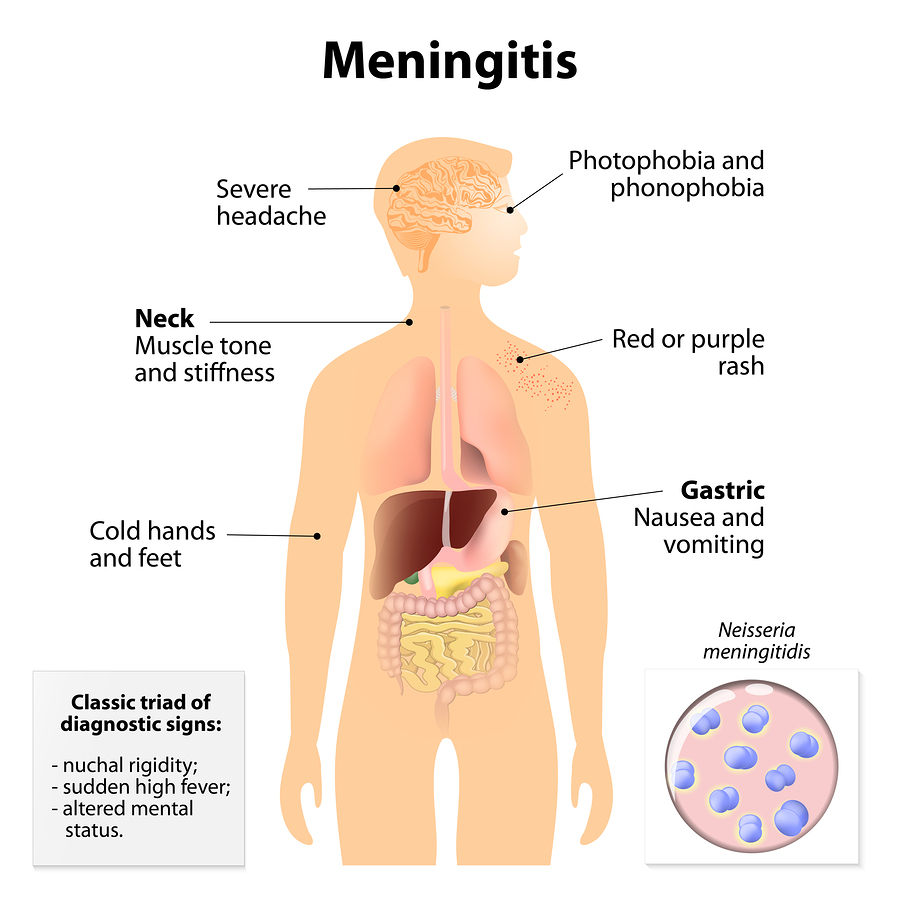 Most of us have heard of meningitis, but what most of us are not aware of is that there are actually many causes of meningitis. Meningitis is a clinical syndrome characterized by inflammation of the meninges, which are the protective membranes covering the brain and spinal cord. The inflammation is usually caused by an infection of the fluid surrounding the brain and spinal cord.
Most of us have heard of meningitis, but what most of us are not aware of is that there are actually many causes of meningitis. Meningitis is a clinical syndrome characterized by inflammation of the meninges, which are the protective membranes covering the brain and spinal cord. The inflammation is usually caused by an infection of the fluid surrounding the brain and spinal cord.
Meningitis can be caused by many different pathogens, including bacteria, viruses, fungi, parasites and non-infectious causes such as physical injury cancer or certain drugs. Most cases of meningitis in the U.S. are caused by a viral infection, and bacterial meningitis is the second most common cause. The severity of illness and the treatment for meningitis differ depending on the cause, therefore it is important to know the specific cause of meningitis. In order for your doctor to determine the type of pathogen, a lumbar puncture must be performed. The cerebrospinal fluid (CSF) is examined and the CSF is cultured to diagnosis the type of pathogen responsible for meningitis.
 The signs and symptoms of meningitis can develop over several hours or even over 1-2 days. These include high fever, severe headache, stiff neck, confusion or difficulty concentrating, and sensitivity to light. The individual may also have anorexia or a lack of interest in drinking and eating.
The signs and symptoms of meningitis can develop over several hours or even over 1-2 days. These include high fever, severe headache, stiff neck, confusion or difficulty concentrating, and sensitivity to light. The individual may also have anorexia or a lack of interest in drinking and eating.
Viral meningitis is more common in the late summer and early fall. It usually doesn’t cause serious illness and most viral meningitis will improve without treatment. Bacterial meningitis occurs most often from late winter to early spring. It usually causes serious illness and can come on quickly and requires prompt antibiotic treatment to improve the chances of a recovery. While most people with bacterial meningitis recover, it can cause serious complications, such as brain damage, hearing loss or learning disabilities.
You may be asking yourself how contagious are viral and bacterial meningitis? If you have close contact with a person who has viral meningitis, you may become infected with the virus that made that person sick. However, you are not likely to develop meningitis as a complication of the illness. Bacterial meningitis germs are usually passed from one person to another through the exchange of infected respiratory and throat secretions. Fortunately, most of the bacteria that cause bacterial meningitis are not as contagious as viruses that cause the common cold or flu. Also, the bacteria are not spread by casual contact or by simply breathing the air where a person with meningitis has been. When the bacteria is spread to other people, it usually happens when there is close or long contact with a sick person in the same household or daycare center, or if they had direct contact with a patient’s oral secretions (kissing).
The most effective way to protect you and your child against certain types of bacterial meningitis is to complete the recommended vaccine schedule. There are vaccines for three types of bacteria that cause meningitis. There are no vaccines to protect against non-polio enteroviruses, which are the most common cause of viral meningitis. However, vaccination does prevent meningitis caused by influenza, measles, and mumps.
Additional steps can help prevent the spread of meningitis, include careful hand-washing to avoid exposure to infectious agents. Practice good hygiene, such as not sharing eating utensils, toothbrushes or drinks. Stay healthy by getting enough rest, exercising regularly, and eating healthy to maintain your immune system.
World Meningitis Day is on April 24th each year. For more information regarding meningitis got to www.cdc.gov/meningitis
